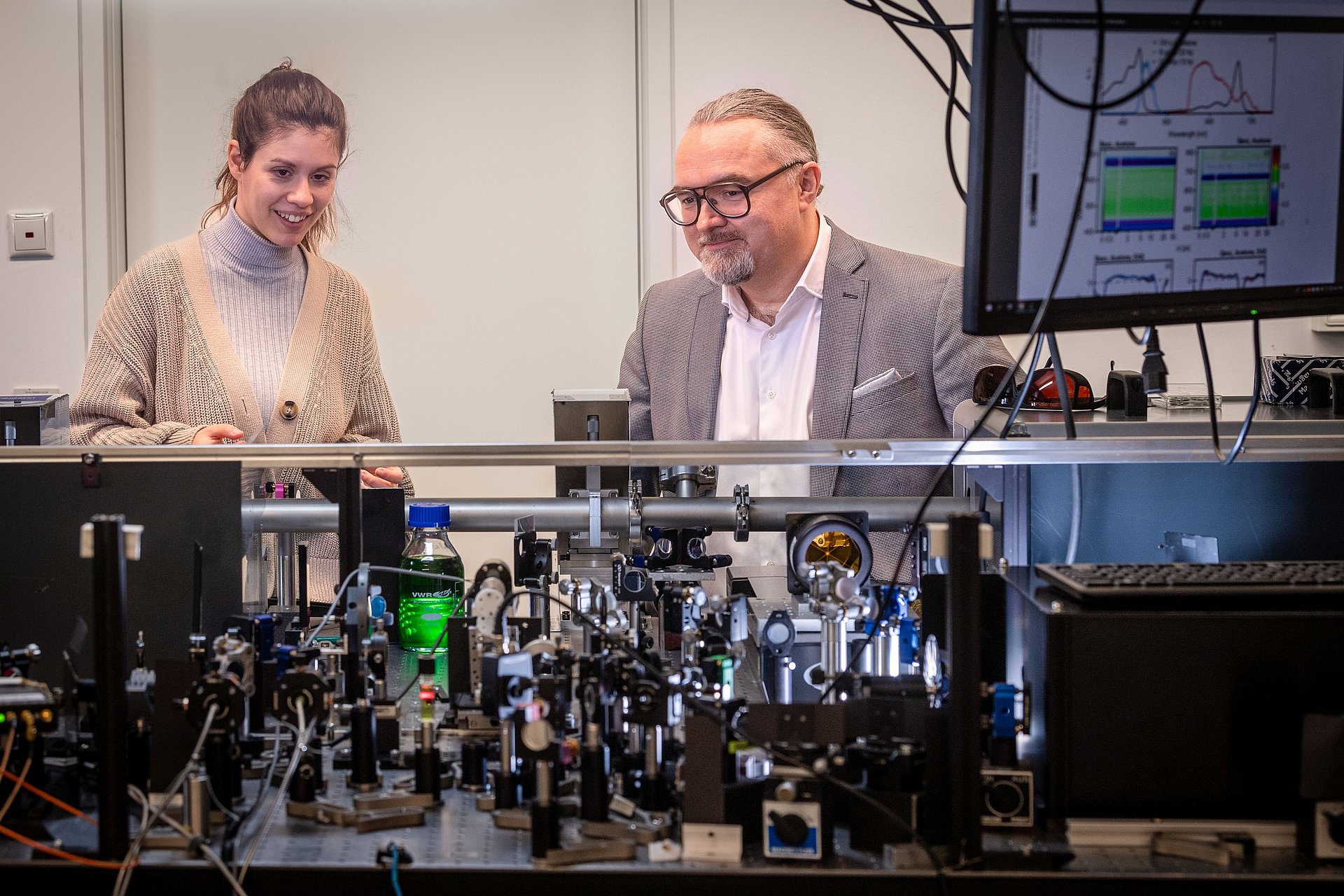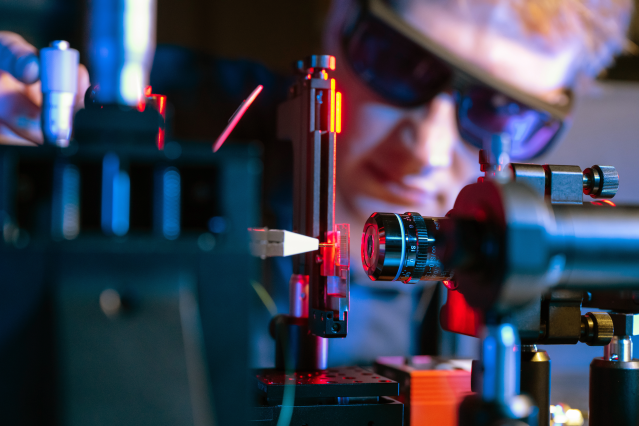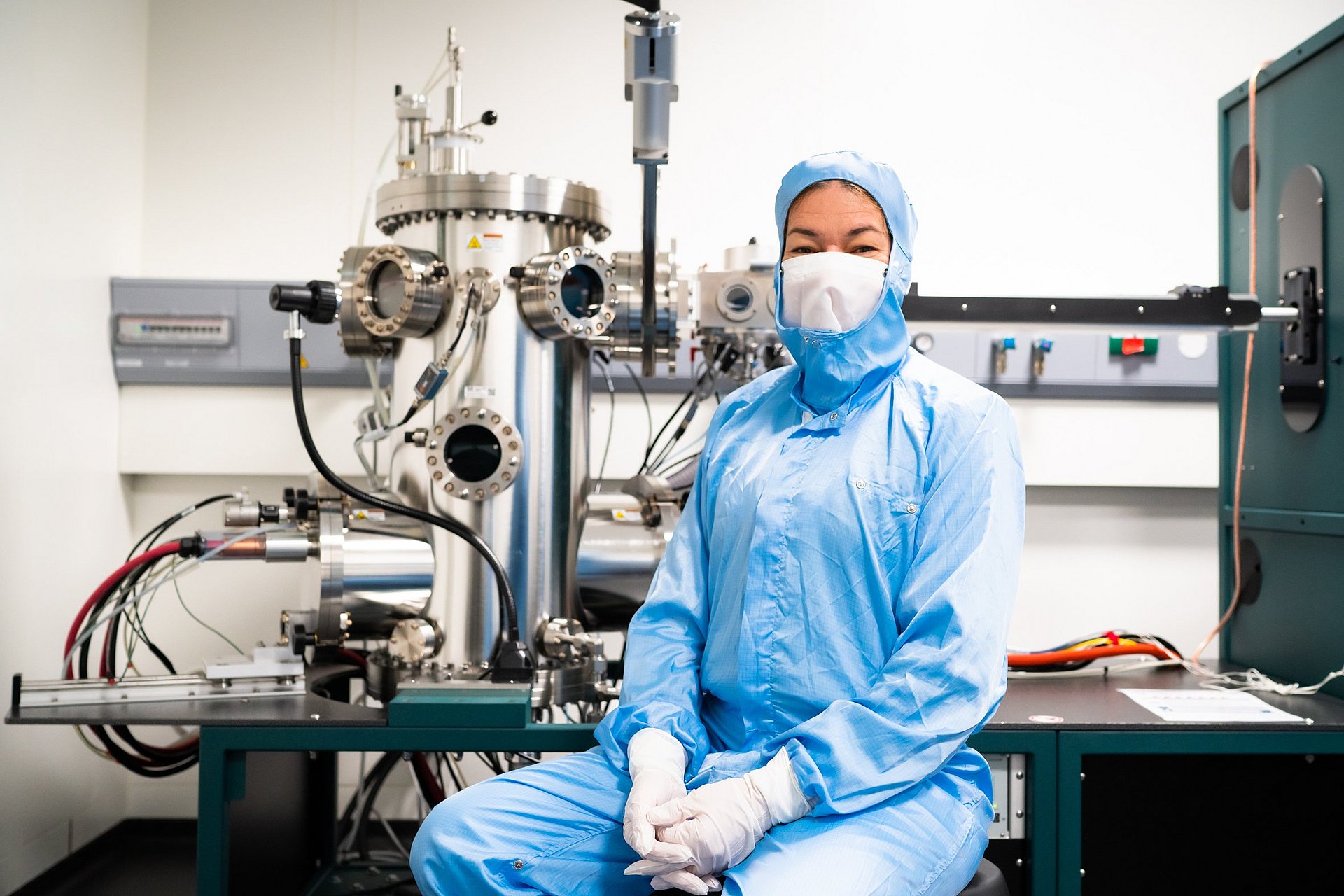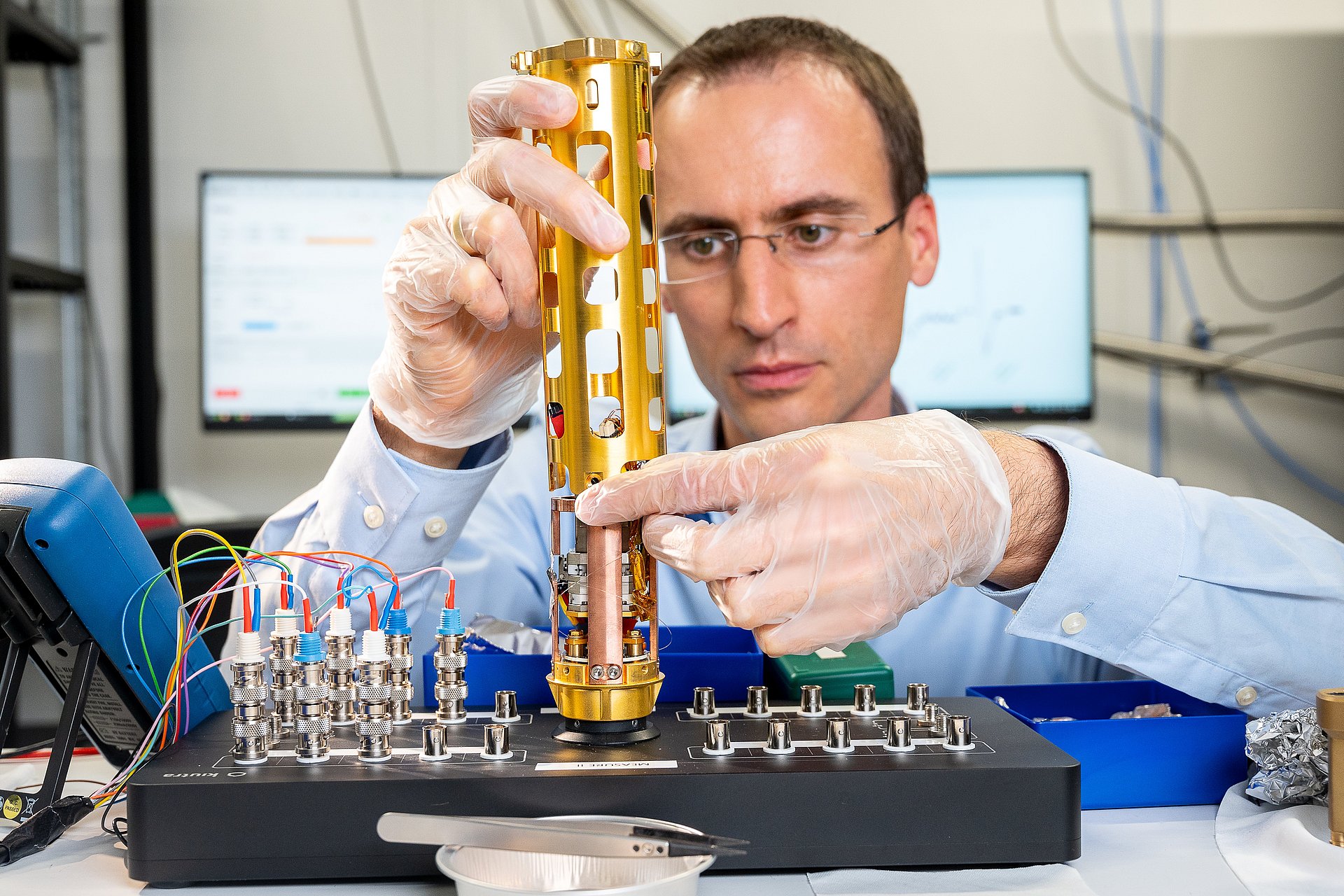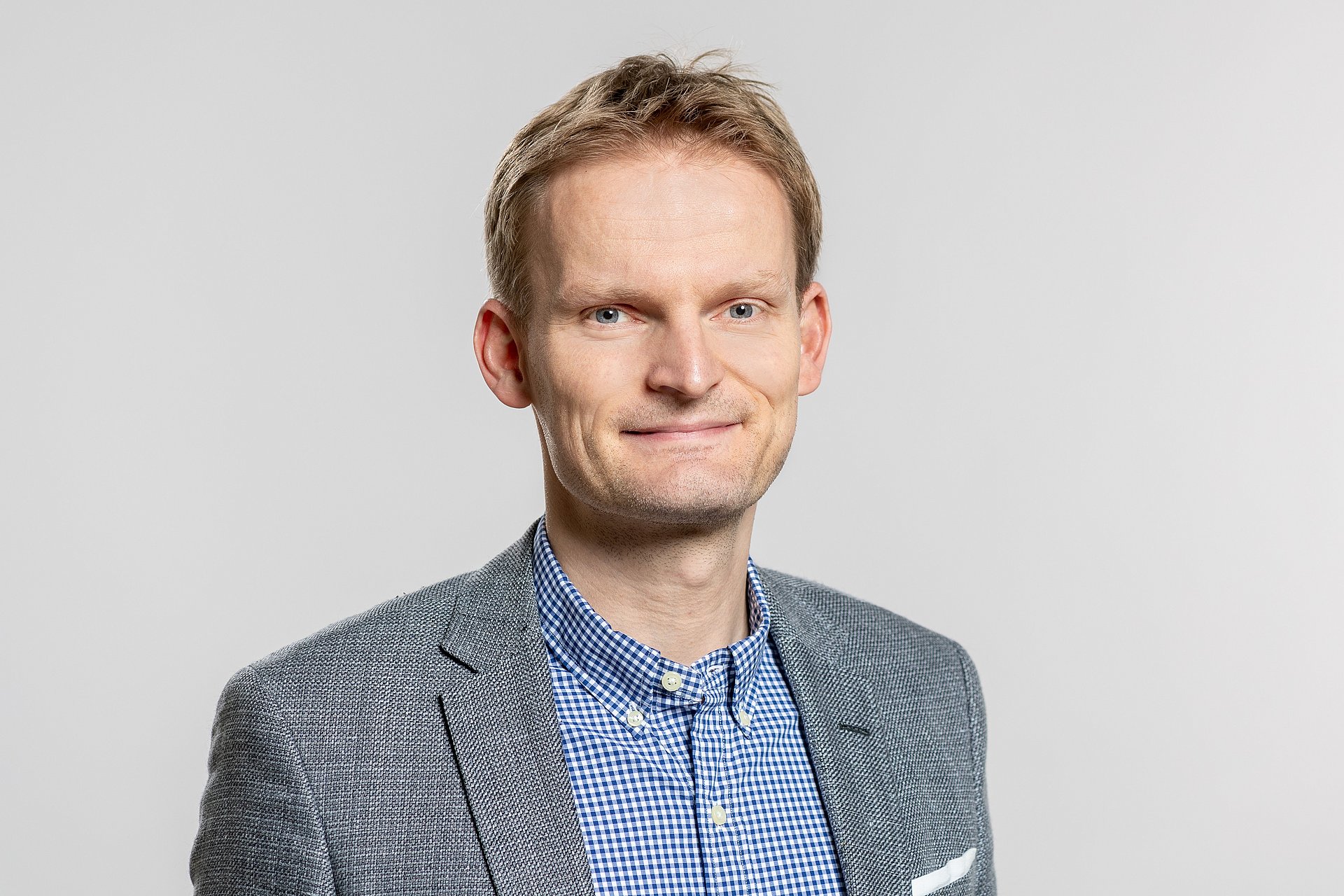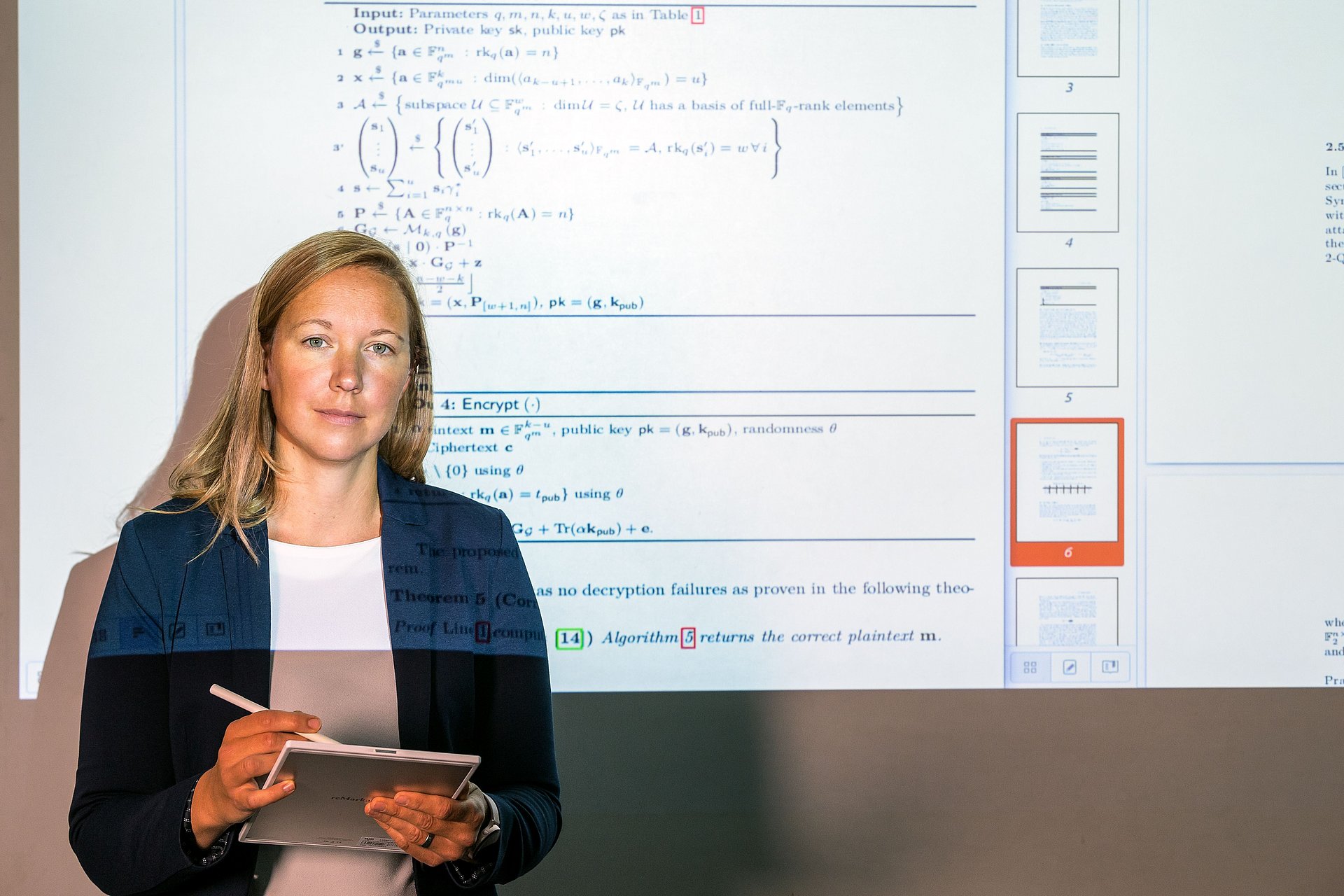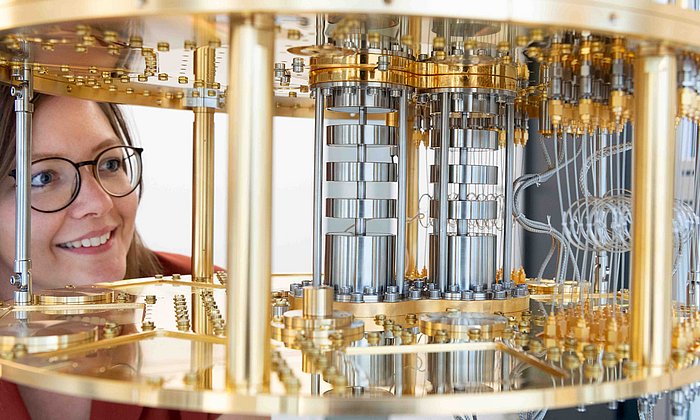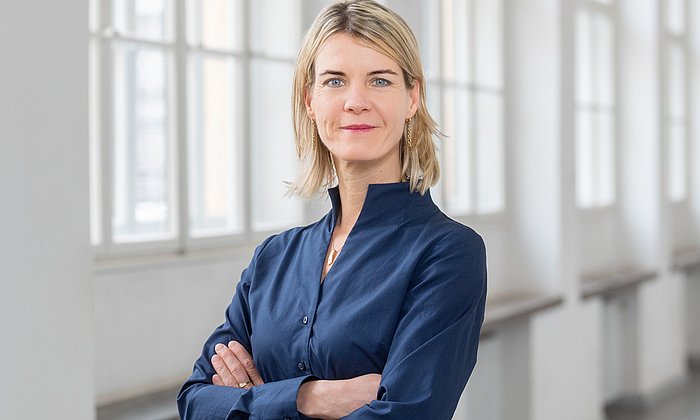World Quantum Day on April 14
Current research on quantum technologies
Microscopy based on quantum sensors
The research group led by Prof. Dominik Bucher has invented an entirely new field of microscopy called nuclear spin microscopy. The team can visualize magnetic signals from nuclear magnetic resonance with a microscope. Quantum sensors convert the signals into light, enabling extremely high-resolution optical imaging.
TUM science glossary
There are many different terms and areas in the quantum world and its underlying theories. In our glossary, we explain some of the most important ones.
To the glossary
Quantum mechanics helps with photosynthesis
Photosynthesis - mainly carried out by plants - is based on a remarkably efficient energy conversion process. To produce chemical energy, sunlight must first be captured and transported. This happens practically loss-free and extremely quickly. Prof Jürgen Hauer and his team use measurements and simulations to show that quantum mechanical effects are decisive in this process.
Satellites for quantum communications
Through steady advances in the development of quantum computers and their ever-improving performance, it will be possible in the future to crack our current encryption processes. To address this challenge, the research group led by Tobias Vogl develops encryption methods that will apply physical laws to prevent the interception of messages. To safeguard communications over long distances, the QUICK³ space mission will deploy satellites.
Vibrating nanostrings
Prof. Eva Weig and her team are building mechanical quantum sensors large enough to be seen under an electron microscope. One day, they could become fundamental components of a new quantum technology.
Projects and facilities
Quantum technologies will profoundly change everyday life in the coming years. We are conducting cutting-edge research in this field - learn about the most important projects and facilities.
Quantum internet: "The biggest problem is data loss"
Researchers around the world are working on a network that could link quantum computers with one another over long distances. Andreas Reiserer explains the challenges which have to be mastered and how atoms captured in crystals can help.
A miniature magnetic resonance imager made of diamond
The development of tumors begins with miniscule changes within the body's cells; ion diffusion on the smallest scales is decisive in the performance of batteries. Until now, the resolution of conventional imaging methods has not been high enough to show these processes in detail. A research team led by Prof. Dominik Bucher has developed diamond quantum sensors that can be used to improve the resolution of magnetic imaging.
“Munich as a hotspot for quantum computing software”
Most of us use software applications every day, for example when writing emails or surfing the internet. But how will future programs look like when new technologies such as quantum computers become available? Prof. Robert Wille and his team are already developing tomorrow’ssoftware today.
Cluster of Excellence MCQST
The researchers in the cluster carry out basic research in all areas of quantum technology and combine disciplines such as physics, mathematics, computer science and chemistry throughout Munich.
To the MCQST website
Quantum-safe data encryption
Because of the way they work, quantum computers will be able to breakcurrent encryption methods. A competition initiated by the US federal agency NIST aims to change this. It is seeking algorithms that will successfully resist cyber attacks from quantum computers. However, it has become evident that it will be far from simple to develop suitable cryptographic schemes. Prof. Antonia Wachter-Zeh and her team have submitted two proposals to the NIST competition. They feel optimistic about their results.
The International Quantum Forum (IQF) 2025 on 30 and 31 January offered a rare behind-the-scenes look at the latest quantum research. Actors from academia, industry and the public demonstrated how the combination of art, science and technology can lead to new perspectives and opportunities.
The aim of the event was to get the public excited about quantum technologies at four different locations in Munich. There were various presentations and projects to raise interest.
- More on World Quantum Day
- Munich Quantum Valley (MQV) promotes quantum technologies in Bavaria with the aim of developing and operating competitive quantum computers. Munich Quantum Valley is funded by Hightech Agenda Bayern.

